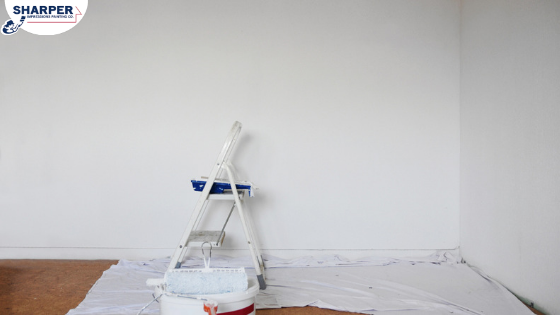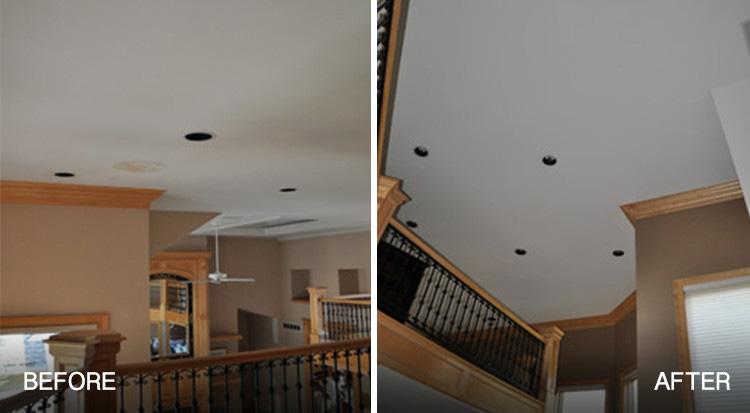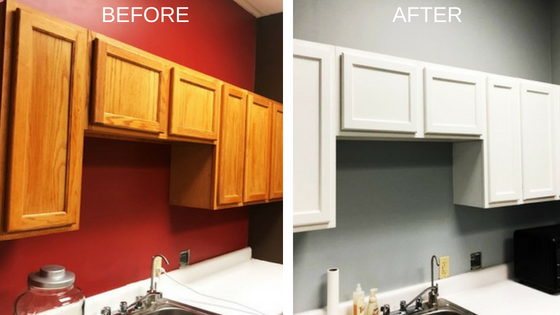Do I Have To Prime If I Use A Paint And Primer
High quality paints and primers continue to get ameliorate and better as the years go by. Non simply are the formulas better and provide better coverage and more than saturated colors, many loftier-quality paints are at present no- or depression-VOC, significant they're healthier for you, your domicile and your home's air quality.
One question we even so go from homeowners, however, is if you need to prime your interior walls before painting. Years ago, many painting professionals recommended primer most every time you painted. But today, with these high-quality and effective paints on the market place, many homeowners may never need to fissure open a tin of primer.

What You Need to Know About Primer and Paint
Before we tell you when you lot should use a primer on your next interior wall painting project, let's first explain what primer is and what information technology does.
What is primer and what does information technology practice?
Primer looks a lot like paint, but has a higher concentration of solids plus an adhesive folder in it. Information technology essentially seals the surface and provides a smooth and clean area for paint to adhere. In some means, it's more of a glue or sealant than a paint.
When do I prime number walls earlier painting?
There are a few cases in which you will e'er need to prime before you lot paint.
1. If the surface is porous
Always prime your walls before painting if the surface is porous. The surface is porous when it absorbs water, moisture, oil, odors or stains. For example, make new drywall is a very porous textile. Both the paper that covers it and drywall mud are compromised by water or moisture when they are not sealed showtime with primer. This material will literally absorb your paint correct into it if you don't prime number first.
Untreated or unstained wood is also very porous. If you lot're thinking about painting over that old woods paneling in your report, or painting a set of shelves, you will want to prime number beginning.
2. If the surface is glossy
Glossy surfaces are difficult for pigment to adhere to. If the wall is covered in a high gloss paint, enamel or if the wood paneling has been shellacked, you could paint glaze after coat and never accept it stick.
While these surfaces will definitely need primer, we would also recommend a light sanding or scuffing beforehand besides. This step will ensure your walls' surface has plenty texture so both the primer and paint can attach perfectly.
3. If the surface is stained

If your walls have any stains on them (erstwhile water harm, fume stains from cooking or candles, child "art" projects), you'll want to prime first. Since primer acts more like a sealant/blocker, it will seal these stains in and so they won't leak back or testify through the pigment.
Before you prime over stains, withal, it is extremely important in some cases that yous fix whatsoever problems that led to the staining in the first place. For instance, if you accept sometime h2o stains, make sure that the leak is fully repaired earlier y'all pigment. It will cause more than issues later (with staining as the least of those problems!) if you lot don't.
4. If the surface has an odor
If the previous homeowners or tenants were smokers, had pets, were victims of a fire or cooked strong smelling foods, the walls themselves accept probable soaked up and retained those odors. A loftier-quality primer volition seal in and eliminate odors and prevent them from returning.
Enquire whatever homeowner who didn't prime number over quondam smoke or pet odors…they'll tell yous the olfactory property came right back. That's because regular paint doesn't take the right structure to keep those odors abroad permanently.
v. If the colour is changing drastically

You'll mostly demand to prime number earlier painting when y'all're going from a very dark color to a very lite color. Paint colors that are very saturated will evidence through lighter, less saturated colors. If you want to save yourself the hassle of v or six coats of paint, prime over that fire-engine ruddy before yous put upwardly that picture-perfect white. Frequently the most popular primer colour to embrace farthermost colors or prepare the wall for extreme colors is grey. Studies have shown that it helps the human middle diffuse extreme colors.
You may also desire to prime before painting if you're switching between two very saturated colors. Priming the walls will help you get a better idea of how the new color is applying and covering. It can be helpful to enquire your local paint store to tint the primer for you ahead of time (most are white), which can also help yous gauge the effect of your new colour.
What almost paint-primers?
The new generation of paint-primers (also known equally "self-priming paint") is a thicker pigment with primer added. Many of these paints are great and provide amazing coverage. The paint manufacturers advertise one coat coverage, however achieving this is very rare. Still, these paint-primers tin't tackle every task, peculiarly the ones listed above. If you're in one of the situations higher up, you're far better off taking the time to prime the surface properly before adding paint.
For drywall, badly stained walls or high gloss paint, we recommend bringing in a professional pigment company for the job. They've worked with these scenarios hundreds of times and will use the right primer to embrace, seal and prepare the surface for painting. Plus, they'll complete the project quickly and neatly, saving you hours on your weekend warrior time.
Get Practiced Help Priming and Painting Interior Walls
Our professional paint experts are ready to prime and paint the interior of your home. Nosotros've worked with many clients to make sure their walls are properly primed and sealed and gear up for pigment. Contact us today for a gratis interior painting quote.
Source: https://www.sharperimpressionspainting.com/recent-projects/primer-before-paint-when-to-prime-interior-walls-before-painting
Posted by: davisyousucabooks.blogspot.com

0 Response to "Do I Have To Prime If I Use A Paint And Primer"
Post a Comment